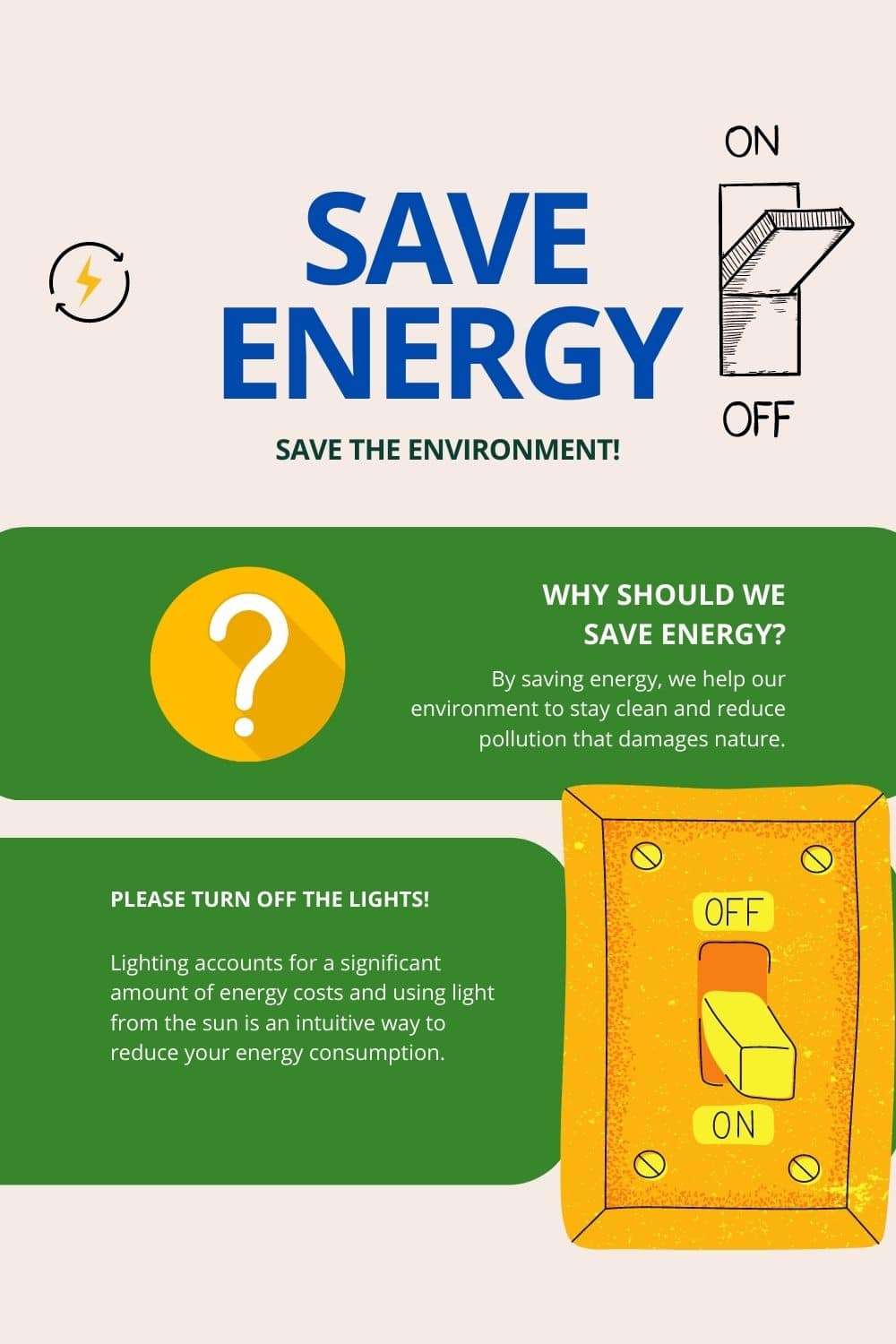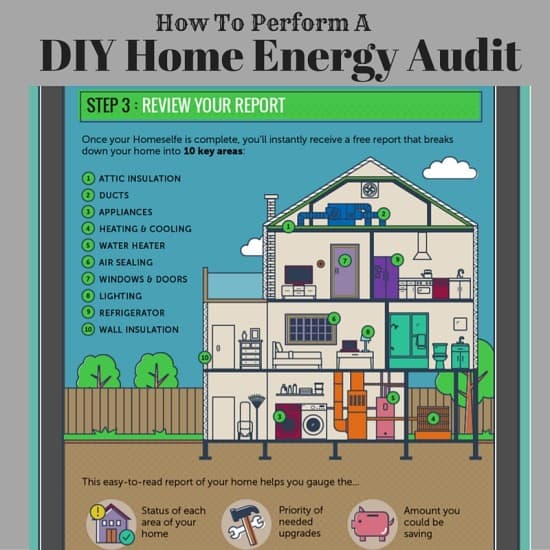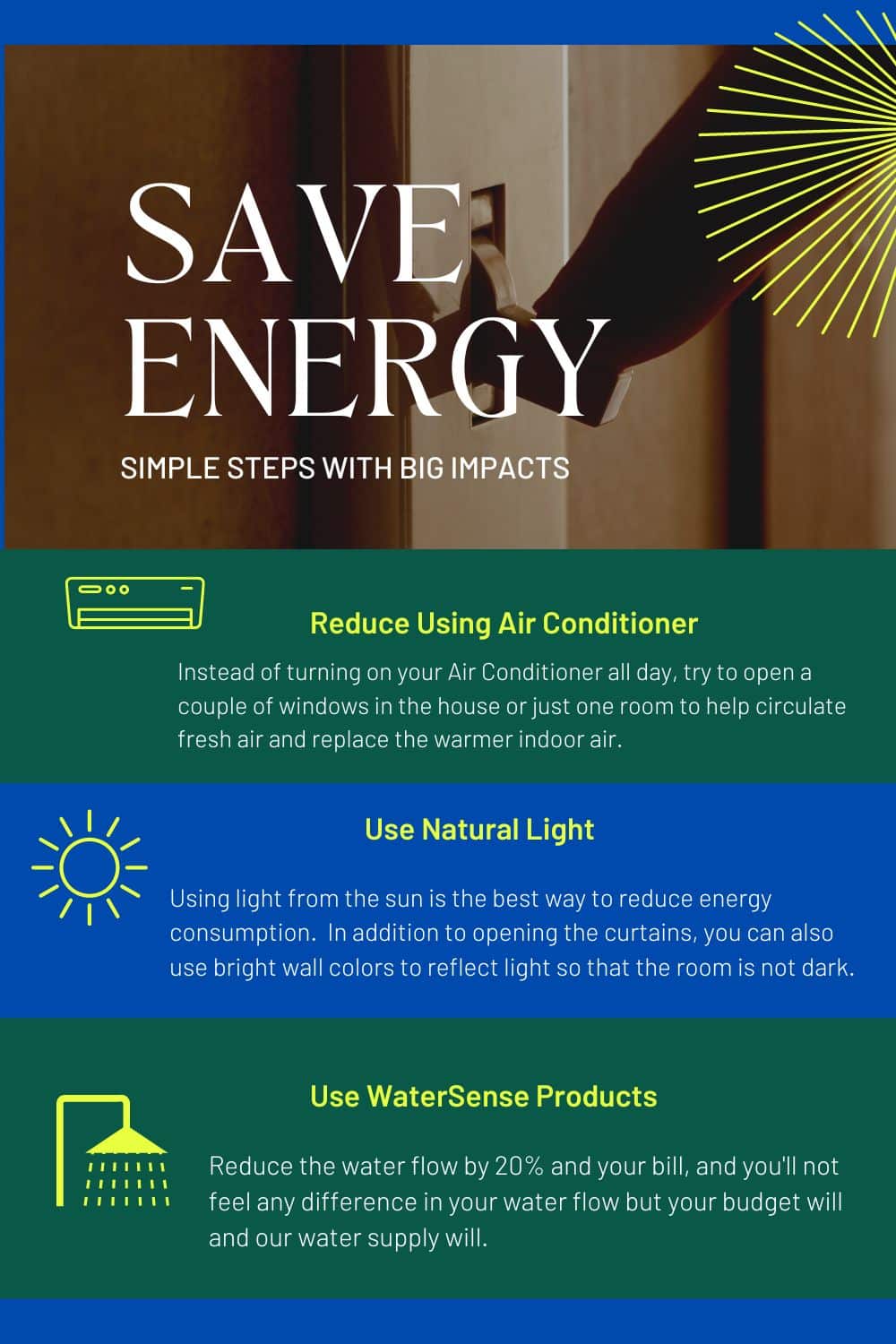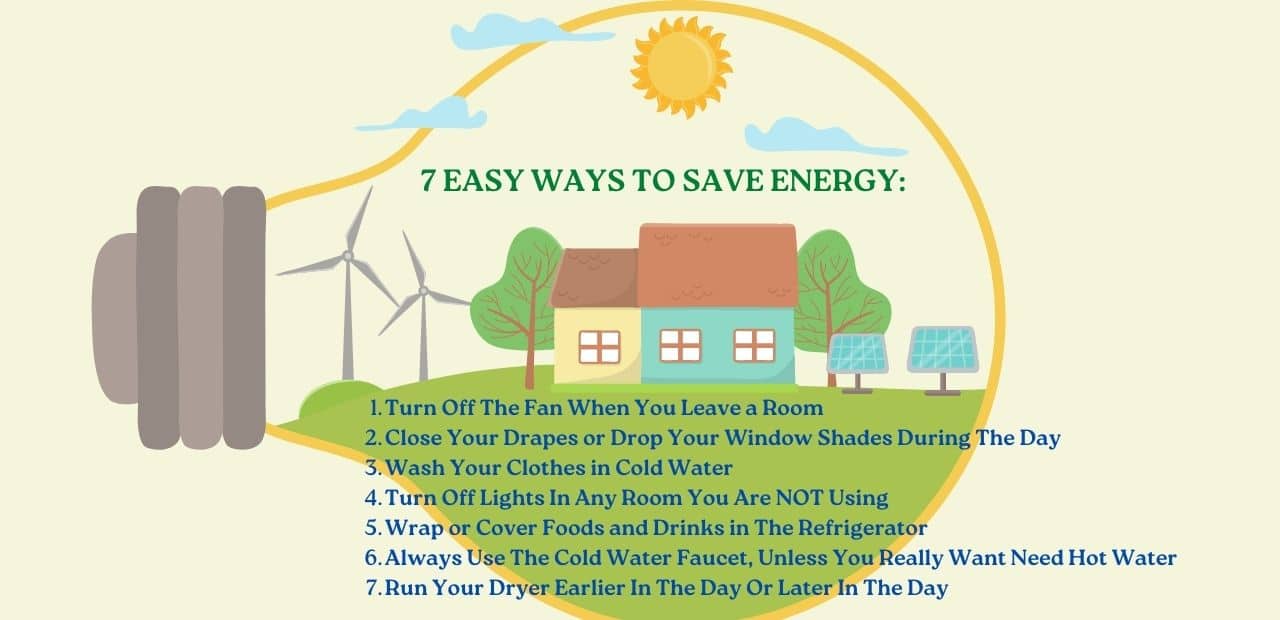Today we are sharing our actionable, easy ways to conserve energy in your home to help reduce your energy consumption and decrease utility bills while combatting inflation that keeps rising!
Generally, at the beginning of a new year, and right before taxes are filed, many begin to review their spending habits and easy and measurable ways to reduce costs throughout their home.

One of the very popular ways to decrease spending is to reduce the usage of things. To do that, we often don’t want to give up what we have, but there are ways to decrease items without losing privileges to them, especially anything about utility bills.
Our household energy usage reduction tips will help you save money in places you might not have considered before.
Today, we will look at ways to conserve energy at home, so you can decrease your costs while still using electricity, water, heat, etc.
In many ways, you might term this a DIY home energy audit (home energy selfie) that you can perform annually to tweak your costs and savings.

Table of Contents
👉 Household Energy Usage Reduction Tips Will:
- Help you decrease spending on your utility bills.
- Find new ways to conserve electricity and water while still using their
- Help you find products you never knew existed but truly make a difference in your home, spending, and our world.
Just like a selfie can tell us a lot about our face and emotions, a home energy selfie of your home spending delivers the bottom line about wasteful energy consumption.

On the positive side of all of this, every time you save a few dollars, it is a few more dollars you have to spend on whatever you want, like vacations, dining out, your favorite clothes, or just paying off other debt.
Money saved is money earned, and why pay out what you don’t need to?
👉 How To Perform A DIY Home Energy Audit
There is an App that can help you; I stumbled upon it when I was searching for ways to save, and it is called the Homeselfe app with a corresponding website.

The App has insight into things you might never have considered before so that you can use it as ideas for household energy usage reduction tips.
- Is your front door(s) solid or hollow?
- Do all of your doors have weather stripping?
- What temperature do you keep your thermostat at for the winter? Summer? Etc.
- Are your televisions old, or are they new energy-efficient models? (how often do you use them?
These are just a few examples that will lead you to gain household energy usage reduction tips, as they will make you think about what is in your home and how you use it. Hence, it is a simple DIY home energy audit giving you an extensive picture which I refer to as a home energy selfie.
And some other apps and websites can also help you; this was just one of many that I have tried to help conserve energy at home.
👉 Other Easy Ways To Conserve Energy In Your Home
Now we are going into the meat and potatoes of household energy usage reduction tips, which are a bit more specific than above.

Remember, household energy usage reduction tips only are helpful as much as you follow and employ them in your life.
👉 1. Use energy-efficient light bulbs.
Although incandescent bulbs have been widely used for over a century, they have become less popular recently.
They have a relatively short lifespan compared to other lighting technologies. They typically last around 1,000 hours, after which they need to be replaced.
This short lifespan increases consumer costs and contributes to waste and environmental pollution.
And they consume more energy, have a lower energy conversion efficiency, and have a shorter lifespan, making them more expensive to use in the long run.
This high cost is passed on to consumers through higher energy bills.
Replacing traditional incandescent light bulbs with energy-efficient ones like LED or CFL can significantly reduce energy consumption.
These bulbs use 75% less energy than incandescent bulbs.
👉 Pro Tips Before Shopping For Lights + Bulbs
- Determine the specific areas in your home that need lighting and the type of lighting you need for each space.
- Shop at Wholesale clubs as you might get a very great deal doing such
- Consider the amount of light you want, the color temperature you prefer, and the style of the fixtures.
- Ensure to select the correct size for your fixtures. You can find the size of your fixtures on the existing bulb or in the owner’s manual. (“A19” or “PAR38.”)
- Consequently, carefully read the product specifications for each light.
- Look for information on the energy efficiency, color temperature, brightness, and longevity of the lights.
👉 2. Install a programmable thermostat.
A programmable thermostat can help you control your home’s temperature more efficiently.
You can set it to adjust the temperature automatically when you are not at home or sleeping, so you don’t waste energy heating or cooling an empty house.
Likewise, programmable thermostats are user-friendly and easy to program.
Most models come with clear instructions and simple, intuitive controls, making setting up your desired temperature schedule quick and straightforward.
They can reduce your carbon footprint and contribute to a healthier planet while increasing the value of your home and making it more attractive to potential buyers.
👉 Pro Tip What To Know Before switching to a smart thermostat.
- check that it is compatible with your HVAC (heating, ventilation, and air conditioning) system.
- Some thermostats work with forced-air systems, while others are designed for hydronic heating systems.
- hire a professional to do the install so it is installed properly and safely
👉 4. Insulate your home
Did you know that insulating your home reduces energy consumption and can lower monthly energy bills?
Insulation acts as a barrier to heat flow and helps to regulate the temperature inside your home, making it more comfortable and efficient.
Before you start insulating your home, it’s essential to assess your insulation needs.
- Consider the type of insulation currently in your home, the location of your home
- What type of climate do you live in?
- Determine the best type of insulation for your home and the areas that need the most attention,
- remember to insulate your attic to keep your home cool in the summer and cozy in the winter.
- You can add more insulation to reach the recommended R-value for your climate.
👉 Other Areas To Insulate To Conserve Energy At Home
Alternatively, seal air leaks around windows, doors, and other areas where air can escape, such as electrical outlets and light fixtures.
Use caulk, weatherstripping, or expanding foam to seal the leaks.
If your windows are drafty or old, consider upgrading to more energy-efficient windows to reduce heat loss and lower your energy bills.
Fortunately, good window replacement companies offer start-to-finish window replacement services, so seek those out if you are doing windows.
👉 5. Use energy-efficient appliances
Another good way to conserve energy is to replace your old household with new appliances.
Always look for those appliances with the ENERGY STAR label, as they meet energy-efficient requirements set by the U.S. Environmental Protection Agency.
Also, choose the appropriate size for your needs.
A larger appliance may be more energy efficient, but it also uses more energy.
While energy-efficient appliances may have a higher upfront cost, they can save money over time by reducing energy bills.
Consider the long-term cost savings when making your purchasing decision.
You also want to look for appliances with a warranty, as this can provide peace of mind and protection against any potential malfunctions or defects.
Another area often overlooked is keeping appliances plugged in even when not in use. Did you know that anything plugged in can still draw power, increasing energy use?
Unplugging these electronics when you’re not using them can save energy and money, or plug into a Plug-In Switch Tap with On/Off Switch.

👉 Waterflow
Change your showerhead, toilet, and sink faucet and decrease the water flow without noticing the change.
You’ll want to update your old showerhead to those that are WaterSense; just like EnergyStar, these showerheads decrease the water without noticeable change on the consumers end, so you don’t have to shorten the shower, bu9t instead replace the head and then spend less on water bills, and use less water!
These new water-efficient products can save about 20% on water consumption which is enormous for our water supply and your budget!
👉 Now You Know Some Easy Ways To Conserve Energy In Your Home
Conserving energy in your home has its advantages.
For starters, reduce your carbon footprint and minimize your household’s environmental impact.
Moreover, you’ll be able to lower your monthly utility bills; over time, these savings can add up to substantial amounts of money.
By reducing the energy you use, you’ll be reducing your reliance on energy sources subject to price fluctuations, outages, and other disruptions.
This can help you to maintain a stable energy supply and reduce your vulnerability to energy-related disruptions.
Implementing these energy-saving tips can significantly impact your home’s energy consumption and reduce energy bills.
Every little bit helps, so start by making a few changes and see how much you can save. ~ Dana XO


Leave a Reply